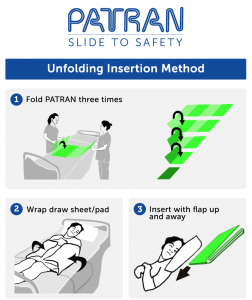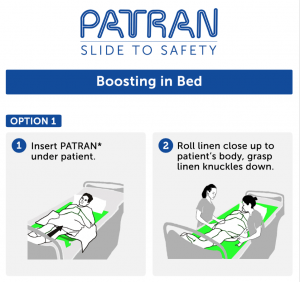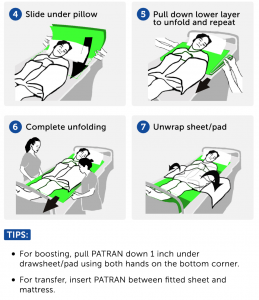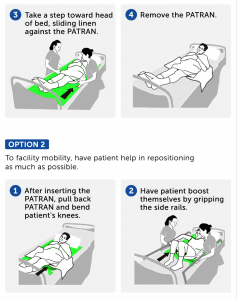ABSTRACT
An 82-year old female patient with a fixed 20 degree valgus deformity of her right knee underwent total knee replacement with complete deformity correction with a non-constrained knee design. Preoperatively, the patient’s right knee range of motion was limited to 20 – 110 degrees of flexion with a 20 degree fixed valgus deformity. She was confined to minimal housebound ambulation with a walker. The pt underwent a total knee replacement under epidural anesthesia with intraoperative use of the eLIBRA™ Soft Tissue Force Sensor to assist in soft tissue balancing. No lateral soft tissue releases were needed. The valgus deformity was corrected intra-operatively and ROM achieved 10 – 120 of flexion. By 6 months post-surgery, the patient had achieved 10 – 130 degrees of right knee flexion, and complete correction of her valgus deformity.
INTRODUCTION
Total Knee Replacement (TKR) is a highly successful procedure which can reduce pain and improve range of motion and function by correcting angular deformities and restoring the integrity of articulating surfaces.1–3 TKR, however, is a misnomer as this operation does not actually “replace” the knee joint as is the case of Total Hip Replacement procedures. Rather it is more accurate to describe TKR
as a re-surfacing of the knee joint. Classically, TKR was accomplished with bony cuts which may be supplemented with soft tissue releases, prior to affixing the component parts, by either cement or non-cement techniques, to the bony surfaces. Over the past three decades, instrumentation has been developed to make the outcome of a TKR more reproducible and predictable.4 However, maximizing simultaneous restoration of range of motion (ROM) and stability has remained a significant challenge.
The knee is an inherently unstable articulation, with two large convex condylar surfaces resting on a relatively flat tibial plateau. Its stability, functionality and longevity are totally dependent upon soft tissues: ligaments, muscle-tendons and to a lesser degree the medial and lateral menisci.
In the knee there are four major ligaments (MCL, LCL,
ACL and PCL) that form the static stabilizers of the joint. Each ligament is composed of two parts, one part maximally tightens at the extreme of flexion and the other at the extreme of extention. Compromise of the structural integrity of any of these major ligaments creates significant knee instability, accelerated wear and dysfunction of the articulation. In addition to these four major ligaments, there are many minor ligaments distributed about the perimeter of the knee. As well, there are transversely directed ligaments attached to the medial and lateral aspects of the distal femur which serve to stabilize the patella within the femoral trochlear groove.
The patella is a sesamoid bone imbedded within the quadriceps mechanism. As such, its tracking is determined by the anatomic relationship between the dynamic quadricepsmuscle, the geometry of the trochlear groove and the by the patello-femoral ligaments. The pelvis is wider than the distance between the knees and as a result the normal femur and tibia are not aligned in a straight line, but rather at a 5 – 7 degree valgus angle. This orientation of the bony structures results in a laterally directed force being applied to the patella with active contraction of the quadriceps. This laterally directed force is resisted by a combination of the oblique fibers of the vastus medialis muscle (VMO) dynamically, and statically by the medial retinaculum and the medial patello-femoral ligament.
The muscle-tendon structures at the knee provide dynamic stability, over which an individual may exert some measure of control. Anteriorly, the quadriceps-patellar tendon mechanism, with its broad retinacular expansion, is responsible for active extension and resistance of flexion of the knee. Posteriorly, the medial and lateral hamstrings are well positioned to actively flex the knee, decelerate knee extension and provide some dynamic rotational stability. In addition across the postero-lateral aspect of the knee, there is an obliquely oriented, “upside-down”, popliteus muscle.
Its function is to assist in control of internal rotation of the femur on the tibia, thereby modulating rotational stresses transmitted to the weight-bearing knee through the ankle due to pronation of the subtalar joint.
With such complexity of soft tissue structures determining knee stability and function, it is obvious how important the restoration of “soft tissue balance” is to the successful outcome of a TKR procedure.2,5
There have been significant evolution and development in TKR instrumentation over the past three decades, beginning from very simplistic rectangular “cutting blocks”, which crudely served to determine the location and orientation of femoral and tibial bone resection cuts, to advances in computer assisted navigation, “customized” instrumentation and application of robotic technology designed to restore “normal anatomy”.4, 6–9 While these technological advances have the potential to more accurately guide the surgeon in the restoration of bony alignment, they do not and have not yet resolved the problem of how to accurately and reproducibly restore the soft tissue balance to the damaged knee.
Today “soft tissue balance” is assessed in a very subjective manner. After implantation of provisional components the surgeon visually inspects the ROM of the knee, the tracking of the patella and manually tests medial / lateral, posterior / anterior knee stability by applying stress in the appropriate directions with the knee in full extension, mid-range and full flexion. If not satisfied with the result achieved he / she may then choose to perform what are termed “soft tissue releases” or re-cut the bones, based on what is felt to be lacking in the reconstruction. Most commonly, dissatisfaction occurs due to poor patello-femoral tracking with knee flexion and/or limitation in ROM. Unfortunately, today’s standard of practice does not supply surgeons with any objective methodology or tool with which to measure the result achieved or improve the likelihood of achieving the outcome desired.
In an effort to address this deficiency, a new instrument has been developed which can objectively measure the relative pressures within the medial and lateral compartments before final bony cuts are performed. It is designed to equalize the compressive pressure within the compartments by the controlled application of a distracting force. In so doing this device will permit appropriate internal / external rotational orientation of the femoral component, relative to the longitudinal axis of the femur, and in so doing achieve “soft tissue balance” of the tissues, particularly those responsible for static control of patello-femoral tracking. This device (eLIBRA™ Soft Tissue Force Sensor manufactured by Synvasive, El Dorado Hills, CA) may reduce the necessity of certain soft tissue releases being performed, such as lateral patellar retinacular release.
This case study is presented to demonstrate the use of this device and the possible clinical application in an arthritic knee with a severe flexion-valgus deformity.
CASE REPORT
N.H. is an 82 year old, slightly built white female with an atraumatic progressive painful deformity of her right knee. The patient had become limited to minimal housebound ambulation requiring a walker and/or wheelchair for independent mobility within her home. She had difficulty transferring from a sitting position and could no longer negotiate stairs without assistance. As a consequence of her growing dependence on her uppe extremities, the patient was developing bilateral carpal tunnel, ulnar nerve irritation and shoulder discomfort. Her pain was in proportion to her activities and was unresponsive to NSAID medication. She had a history of blunt trauma to the right tibia after a fall that was complicated by a brief period of cellulites, treated successfully with oral antibiotics. Otherwise, she had no history of co-morbidities related to her knee complaints.
On physical examination the patient was found to be an alert, oriented female sitting in a wheelchair in no apparent distress. However on attempting to stand and bear weight on the right lower extremity she had significant discomfort. She was able to remove her shoe and stocking from the left foot but required assistance with her right foot. The skin over the right lower extremity was intact and there was no effusion, soft tissue swelling or erythema about the right knee. The right knee was held in a flexed posture. The right knee ROM was relatively painless but limited to 20 –110 degrees of flexion with a 20 degree fixed valgus deformity. (Figures 1 & 2) There was significant crepitus within the patello-femoral and lateral compartments throughout the ROM. ROM of the left knee and both hips were painless and within normal limits. Her left foot had a mild equino-varus contracture limiting left ankle dorsiflexion to -5 degrees from neutral, due to disuse and posterior soft tissue contracture. There was tightness in the posterior calf musculature with the right foot and ankle limited to 0 degrees of dorsiflexion, 30 degrees of plantar flexion, and a fixed 10 degrees of pronation in the subtalar joint. Neurovascular supply to both feet was intact.
X-rays demonstrated a significant valgus deformity of the right knee, erosion of lateral femoral condylar bone and severe tri-compartmental osteo-arthosis. After exhausting all conservative options of treatment, the patient was indicated for right total knee replacement.
The patient underwent a TKR with epidural anesthesia, intra-operative foot pumps and minimal tourniquet utilization except during cementation of the TKR components. The eLIBRA™ Soft Tissue Force Sensor was used to determine optimal external rotation positioning of the femoral component before completion of femoral cuts. (Figure 2) Care was taken throughout the procedure to avoid placing excessive stress on the peroneal nerve. Intra-operatively the patient received a non-constrained TKR with a 9 mm polyethylene insert. The patella was re-surfaced with a 9mm thickness polyethylene component. ROM achieved intra-operatively was 10 – 120 of flexion with no valgus deformity. Post-operatively the patient’s treatment included: routine DVT prophylaxis with epidural PCA × 48 hours, 325mg. enteric coated aspirin, gentle progressive active and active-assisted ROM and weight-bearing activities as tolerance permitted.
The patient had an uneventful post-operative recuperation and was discharged to an acute rehabilitation facility for completion of her early therapy. She returned to her home at three weeks post-surgery, independent in ambulation and full weight bearing with a rolling walker. Rehabilitation continued, initially within the home, and then outside the home by 8 weeks post-surgery. Her limitations at that time were due to the mild equino-varus contracture of her contra-lateral foot and ankle. By 6 months post-TKR, the patient had achieved 10 – 130 degrees of right knee flexion, with no recurrence of her valgus deformity. (Figures 3 & 4) She was ambulatory in her neighborhood with a rolling walker and a splint on her left ankle. Within her home environment, she was able to negotiate short distances without use of a cane or walker.
DISCUSSION
Soft tissues are extremely important for physiologic functioning of the knee joint.5Severe osteoarthrosis is often associated with deformity and compromise of normal soft tissues. TKR is a highly successful procedure for the relief of painful arthritis.1However, when attempting to restore function and correct abnormalities in ROM and alignment by TKR, it is imperative that attention be given not only to restoration of proper bony alignment, but even more importantly, to soft tissue balancing. Insufficient or incorrect soft tissue balancing may result in limitation in ROM, patellar mal-alignment, knee instability, pre-mature mechanical failure of the TKR components and pain.
Present day instrumentation for TKR offers many approaches for the correction of bony deformity: intra-medullary, extra-medullary guides, cutting blocks based on bony landmarks, computerized navigation, “customized” cutting guides fabricated based on pre-operative radiographic studies, and robotics.4,8 But none of these strategies offer a means to assure reproducible and accurate balancing of the soft tissue structures critical to optimal knee function.
The eLIBRA™ Soft Tissue Force Sensor is a newly developed instrument specifically designed to objectively address the challenge of achieving optimal ligament balancing in TKR. It may be an effective way to restore patello-femoral tracking while reducing the need for lateral release and compromise of the patellar retinaculum. This case report demonstrates the effectiveness of this tool in helping to accurately restore knee kinematics in a knee with significant fixed flexion and valgus deformities. The author has found it to be a very effective tool not only in helping surgeons to objectively assess their surgical technique but also in the training of orthopaedic surgeons to appreciate and achieve proper soft tissue balancing.
REFERENCES
1. Insall J, Tria AJ, Scott WN. The total condylar knee prosthesis: The first 5 years. Clin Orthop Relat Res. 1979;(145)(145):68 – 77.
2. Insall JN, Binazzi R, Soudry M, Mestriner LA. Total knee arthroplasty. Clin Orthop Relat Res. 1985;(192)(192):13 – 22.
3. Sledge CB, Ewald FC. Total knee arthroplasty experience at
the robert breck brigham hospital. Clin Orthop Relat Res. 1979;(145)(145):78 – 84.
4. Laskin RS, Beksac B. Computer-assisted navigation in TKA: Where we are and where we are going. Clin Orthop Relat Res. 2006;452:127 – 131.
5. Griffin FM, Insall JN, Scuderi GR. Accuracy of soft tissue balancing in total knee arthroplasty. J Arthroplasty. 2000;15(8):970 – 973.
6. D’Lima DD, Patil S, Steklov N, Colwell CW,Jr. An ABJS best paper: Dynamic intraoperative ligament balancing for total knee arthroplasty. Clin Orthop Relat Res. 2007;463:208 – 212.
7. Picard F, Deakin AH, Clarke JV, Dillon JM, Gregori A. Using navigation intraoperative measurements narrows range of outcomes in TKA. Clin Orthop Relat Res. 2007;463:50 – 57.
8. Saragaglia D, Chaussard C, Rubens-Duval B. Navigation as a predictor of soft tissue release during 90 cases of computer-assisted total knee arthroplasty. Orthopedics. 2006;29(10 Suppl):S137 – 8.
9. Viskontas DG, Skrinskas TV, Johnson JA, King GJ, Winemaker MJ, Chess DG. Computer-assisted gap equalization in total knee arthroplasty. J Arthroplasty. 2007;22(3):334 – 342.




